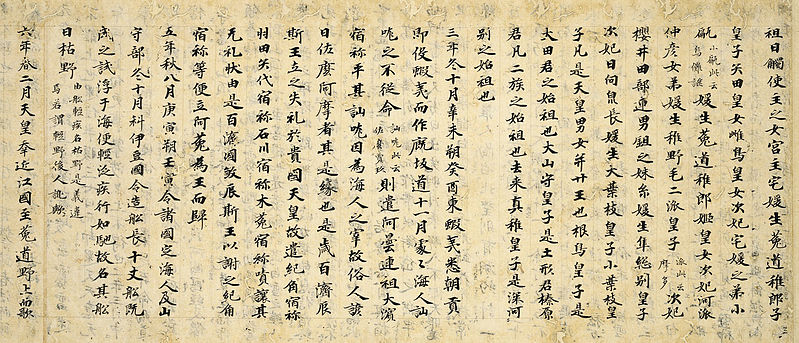
The Kojiki and Nihon Shoki of Japan
Historical records tell us a lot about how our ancestors lived and help future generations understand how things came to be. The Kojiki and Nihon Shoki of Japan are the two oldest written documents that chronicle the history of the country. There’s no better way to make a better future than to learn from the past.
A page from the Tanaka version of the Nihon Shoki..
The Kojiki (古事記), “Record of Ancient Matters” or “An Account of Ancient Matters” can be traced back to the early 8th century (711-712).
It is the oldest extant chronicle in Japan written by Ō no Yasumaro (a Japanese nobleman, bureaucrat, and chronicler), on the request from the Empress Gemmei. The Kojiki is a compilation of origin myths of the four main islands of Japan and the Kami (the spirits that are worshipped in the religion of Shinto). The Kojiki is mainly composed of various songs and poems. The myths are written in a form of Chinese characters that is used to convey sounds. The special use of the Chinese characters is known as Man’yōgana, an ancient writing system that employs Chinese characters to represent the Japanese language, critical in understanding the songs written in Old Japanese.
The Nihon Shoki (日本書紀), “The Chronicles of Japan,” is the second oldest book of Japanese history. It contains more detailed and elaborate ancient written texts than the Kojiki, and is considered the most complete extant historical records for many archeologists and historians. The Nihon Shoki was completed in 720 under the supervision of Prince Toneri, assisted by Ō no Yasumaro.
Kojiki_den. | Yanajin33
The Nihon Shoki begins with the myth of creation, explaining the origin of the world and the first seven generations of divine beings, followed by a number of other myths, and continues with accounts leading all the way to the 8th century. The Bihon Shoki is said to accurately record the reigns of Emperor Tenji, Emperor Temmu, and Empress Jitō. The ancient writings give details on the merits of virtuous Japanese rulers as well as errors of the bad rulers. They also tell us about mythological eras and Japan’s diplomatic contacts with other countries. The Nihon Shoki was written in classical Chinese with multiple transliteration notes that tell the reader how words were pronounced in Japanese.
The writings contained in the Kojiki and Nihon Shoki are part of the inspiration behind many practices in Japan and are deeply ingrained in the culture and way of life of the Japanese people.

